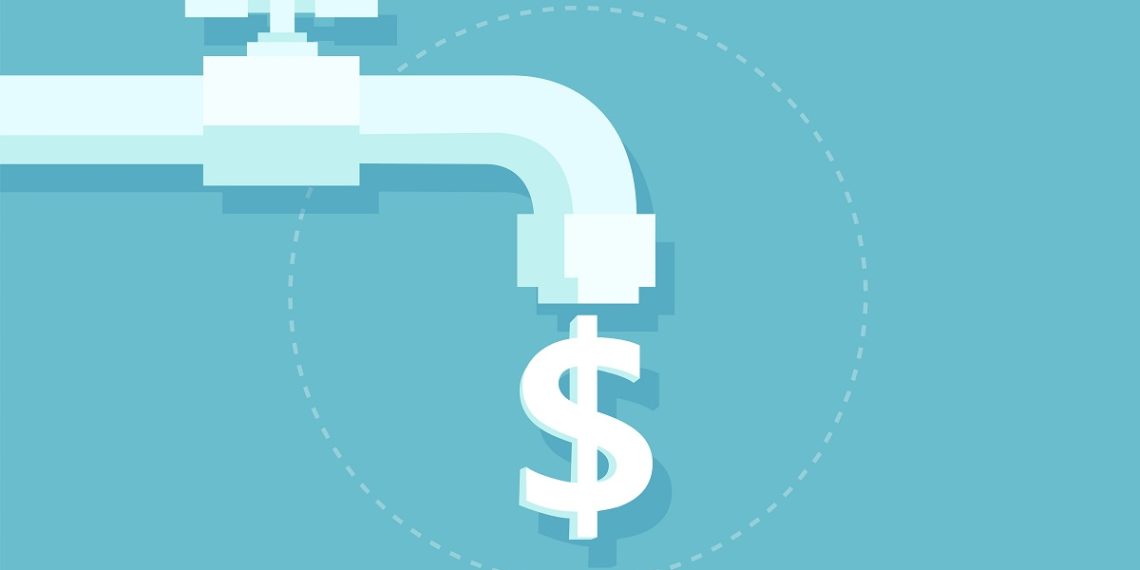Water supply is one of the most essential bills that we pay every month. With the water consumption we use every day for bathing, drinking, and even cleaning up the car, it is non-argumentative that water systems are needed for us to have clean and potable water every day. Yet, whether you’re taking a sip or just washing your hands, we might often forget that every drop of water comes with a price tag.
Perhaps, you may be moving to Australia or getting out of your parent’s house to become independent, and as you may know, utility bills like water come with the responsibility you signed up for. Consequently, different parts of Australia have standard rates when it comes to water supply per area. The bill always comes with a standard rate with an added variable rate according to your water consumption. And in Australia, this is often paid quarterly with the accumulated total of your water bill.
Fixed Supply Charge
Water bills have a fixed supply charge annually that is billed and paid through split quarterly payments. The supply rate is based on the yearly consumption of a household, as indicated in the principles of the National Water Initiative by the Department of Climate Change, Climate Change, the Environment, and Water. The water network charge can basically go as little as $40 to $270 per quarter but depend on the standard charges on water system providers per area.
South Australia
For South Australia, the annual charge is $283.20, and paid at $7.80 per quarter. SA Water, the main water supply provider in SA, charges $1.95 to $3.01 Kiloliter on water consumption. Yet, the SA water rate depends on how many people live in one residence. In most cases, an average person in SA uses 190 liters of water per day; for households with 3 people, it can go up to 383.7 liters per day, which brings to their pricing tier of $2.775. Hence, different pricing tiers apply per consumption.
Queensland
Urban Utilities is one of the main water providers for residences, especially in Brisbane. The average water bill Brisbane consists of the water usage charges ie. State Bulk Water Charge which refers to the amount of kiloliter that providers pay the state government for treated water; Distributor Retailer Price – is the amount of water your retailer provides to be able to deliver quality water to your home; and Fixed Water Supply Charge – set of fixed pricing which retailers charge to maintain the water network (also varies per millimeter of network your residence has). Nonetheless, the state bulk price per kiloliter is at $3.301, the distributor-retailer price per kilometer is at $0.863 to $1.793, and the water service charge which falls at $0.668 on average per day.
Australian Capital Territory
The ACT also applies tiers for their water supply pricing per household. Their water bill consists of a supply charge per year at $180, with different tier pricing of $2.48 for Tier 1 and $4.99 for Tier 2. Additionally, their sewerage, or the fixed water network charge that residents pay for water to be delivered to homes, is charged annually at $495.16 for non-residential establishment charges, and $506.30 for residential water supply. These charges are according to Icon Water, the main water provider in the ACT.
Northern Territory
Water in the Northern Territory is mainly supplied by Power Water. This includes water bills which vary per user and are charged at $2.0606 on a fixed basis. A fixed daily charge is added per connection size, at $0.8605 at 25 mm max to $55.0819 for those with 151 to 200 mm pipe connection. Apart from this, sanitary fittings are also added on top of those charges, with an average of $590.87 for 3 to 24 fittings, billed annually.
Tasmania
Tasmania’s water charges include a fixed water charge, a variable water charge, a fire service charge, and an unconnected water service charge. For residences with a 20mm connection, the average water bill Tasmania charge is $367.39, and $573.13 for 25mm. Consequently, variable water charges are $1.1376 per kiloliter and 91.85 for 20mm for the fire service charge. Nonetheless, unconnected properties within Taswater’s serviced land are charged $367.39 annually.
Victoria
Victoria has 3 main water providers for residential units around the region – Greater Western Water, South East Water, and Yarra Valley Water. On average, the average water bill Victoria annually can go to $947, $967, and $1,034 respectively. These averages include water usage at an average of $2.6765, sewage disposal at $0.9444, and recycled water usage at $2.1513 – all per kiloliter.
New South Wales
The average water bill across NSW is $246 per quarter, which is already inclusive of service charges. Yet, larger households can go up to $372 per quarter, and the consumption and bill depend on how many people use water in a single home, while smaller households have a significantly lower average, at around $220. Hence, when paid annually, the average water bill in NSW can go to an average of $880 to $1,488. The sum of water bills in NSW consists of drinking water charges, Sewerage Service Charges, Stormwater Service Charges, and Fixed Charges as well.
Western Australia
Average water bill in WA has one of the lowest charges when it comes to water supply. In the region, residential units pay an average of $221 per quarter and this includes fixed service charges, sewage charges, and consumption charges as well.
Average water bills in Australia always depend on the provider and what region you are in. With the fixed charges and the additional charges per kiloliter of water consumption, you might want to think of positioning your residence in an area with the lowest charge per kiloliter.
Nonetheless, most Australians can pay their water bills quarterly, but you can also pay your water bill monthly or annually. Yet always remember that every drop is priced, so better have your water budgeted to avoid skyrocketing charges.


